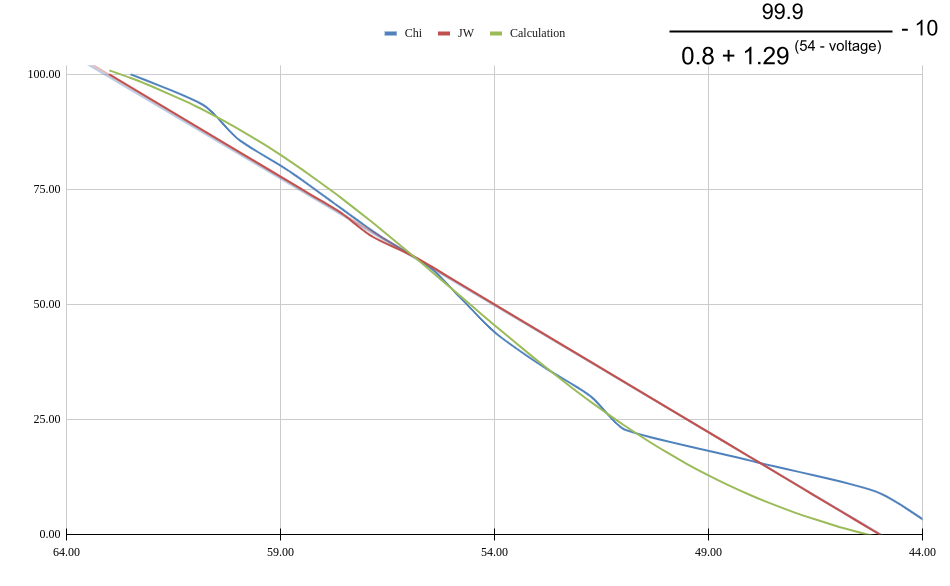Voltage to battery percentage is not linear so you can't just use a formula for this if you want something accurate.
On my OnewheelEnhancer tweak, I've integrated ChiBattery's voltage-to-percent lookup table, by linearizing voltage between two values which gives a much accurate result.
But I think a better way to do this on a chip would be to leverage used amps once the chip knows how much total amps the battery has, which is easily deductible from approximating remaining battery percent from voltage.
So on the first charge of a newly chip'd board, display an approximated voltage based on value, then once this percent drops to 80% (and then recalibrated at 50%), we'll know what the total amperage of the battery based on nearest known value.

The following formula can be used to convert voltage into % remaining on an idle XR. It works with a CBXR, and so would work with a JWXR. I don't know how it would work with VNR.
Also, I updated pOnewheel and Onewave for my Two-X to do a pretty good job showing the % remaining while moving at about 10 MPH. Maybe, we could try a new way to do that here, so you don't have to stop riding to check your % remaining? In those apps, I had access to a lot of variables, we may not be able to do this with just the variables output by the BMS.
I think JW just drops the amp usage statistics because FM combines them with other variables to stop the board. However, I think it would be worth manipulating them to cause the main app to actually report correctly. For example, we could divide them by 10 maybe, then apps like OWCE could have an option to multiply by 10, and then report some of these statistics to the user in a reconstructed fashion.
The solution should always pass through the individual cell voltages also, because these are important for troubleshooting when they are available.